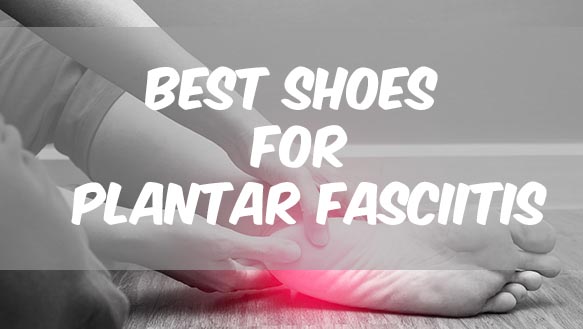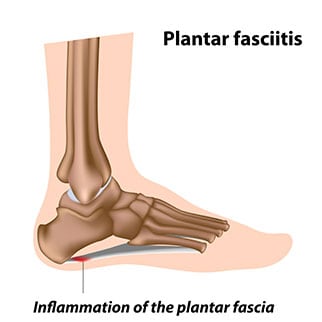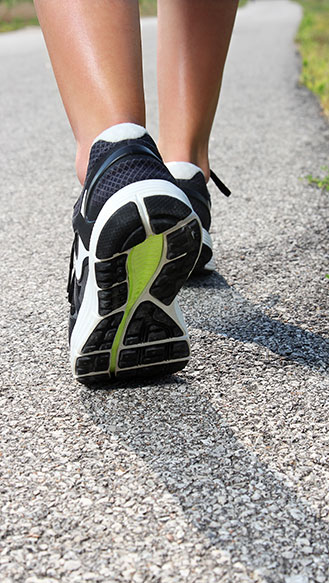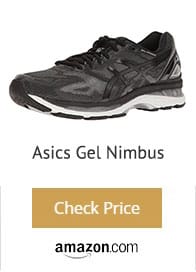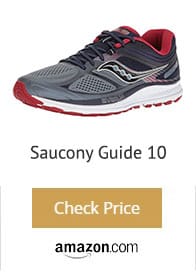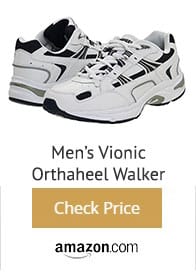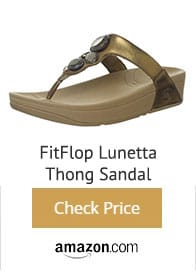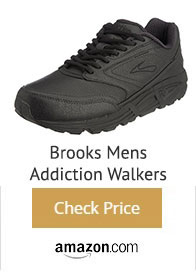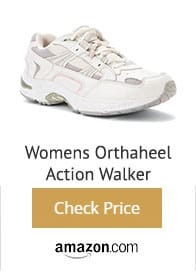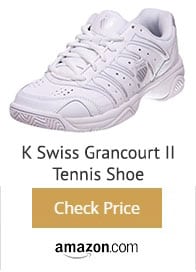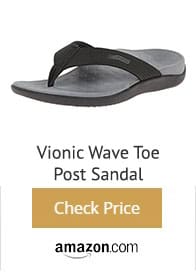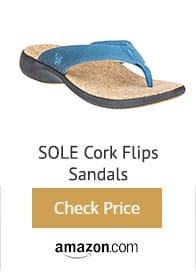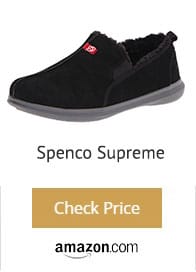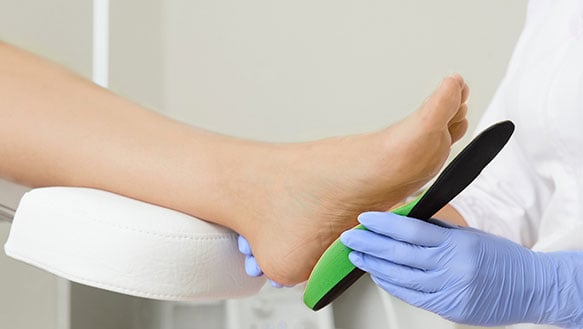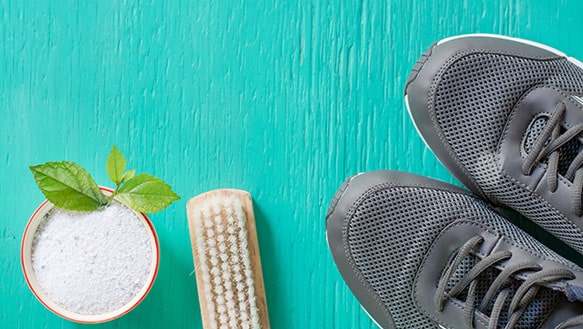Plantar fasciitis (PF) is a pathological and painful condition, and it involves the inflammation of the plantar fascia. The planter fascia is the fascia of the foot, which lies at the heel of the foot. It is the ligament that connects heel bone to the toes.
It is usually more common in runners and heavily-built people because in these group of individuals, the plantar fascia is always stretched too much. Some studies have also pointed towards PF being caused by collagen degeneration making PF a degenerative process.
Plantar fasciitis causes a sharp irritable pain that is felt as one moves, but it will most probably not be felt as one is standing in a single position. This chronic condition also decreases blood flow in tissues which are damaged as a cause. Increasing blood circulation to those soft tissues can help with the inflammation as well. It is most commonly found in middle-aged adults. It may occur in younger people if they are constantly on their feet. Heel spurs, which is often painless, are associated with plantar fasciitis as well. Therefore, if you have the symptoms of a heel spur, you may want to discuss the possibility of having PF with your doctor.
Contents
Symptoms
A major symptom of plantar fasciitis is the sharp irritable pain, which is usually localized at the heel region. The pain is usually felt as one walks and is most painful with the first few steps taken just after awakening. The pain can worsen with exercising and any other rigorous activity and also as with the day goes on. It may be felt strongly if you walk up the stairs or walk and stand after a long period of time sitting.
Causes
The major cause of plantar fasciitis is excessive stretching, tension, and stress on the plantar fascia. The plantar fascia acts as a shock absorber for the foot and keeps the contents of the foot in place. When this fascia becomes too stressed, it begins to wear out. This wear and tear of the plantar fascia then lead to its inflammation. However, in a large number of cases, the plantar fasciitis is idiopathic.
Other causes can be due to the following reasons if you:
- Have excessive pronation
- Have pes cavus (high arches) or pes planus (flat feet)
- Tend to be on your feet for an extensive length of time
- Are overweight
- Wear shoes that do not fit appropriately or that are too old
- If you have tight Achilles tendonitis or calf muscles
Diagnosis
If you suspect that you may have plantar fasciitis, you may consider contacting your doctor who can check your feet and make a professional diagnosis. During your visit, they will check your feet, ask you to walk and stand. They will also analyze your medical history, any past injuries you may have had. Based on what symptoms you exhibit, where the stabbing pain is localized and the time of the day when the pain occurs the most, along with your physical activity history, your doctor will be able to make an informed diagnosis.
To confirm the diagnosis and rule out any other possible stressors or fractures to your feet, they may take an X-ray of your foot.
Risk Factors
There are several factors which can increase the likelihood of plantar fasciitis. One if these is age. The risk and likelihood of developing plantar fasciitis increases with advancement in age, and as mentioned earlier, it is usually more common in adults with the age of fifty and above. The risk of plantar fasciitis is also increased in individuals who have pes planus (flat foot) as well as in individuals who are obese and overweight. Also, industry workers, teachers and even ushers in any ceremony, are prone to plantar fasciitis.
Complications
Plantar fasciitis, when left untreated, is capable of leading to severe pain in the foot in the long-run, and this can go as far as hindering the ability of the patient from walking altogether.
Treatment
Plantar fasciitis is usually treated through three main procedures: medication, physical therapy, and surgery. Medications which are used for plantar fasciitis are pain-relieving drugs. These drugs include acetaminophen and ibuprofen. The physical therapy form of treatment is usually under the supervision of a specialist called a physical therapist. Physical therapy exercises for treating plantar fasciitis are majorly stretching exercises, all of which will reinforce the tendons around the leg and foot and strengthen the leg's muscles. Night splints are also highly recommended by physical therapists.
They help stretch the plantar fascia and tendons of the lower leg while at night. This can go a long way to hasten treatment and make it more effective. Steroid injections are usually administered when treatment by normal drugs proves futile. Sometimes, the steroid injections are given to make the treatment by drugs work faster and be more effective.
Surgery is usually the last resort for the treatment of plantar fasciitis. It is done when all the methods outlined earlier fail to work out. Surgical treatment of plantar fasciitis involves removing the plantar fascia. This can sometimes cause weakness in the arches of the foot.
A recent and non-invasive method for treating plantar fasciitis is by the use of plantar fasciitis shoes or insoles which are made specifically to treat plantar fasciitis and as well aid movement.
Here are some useful tips that can aid with pain management related to your condition:
- Try giving your feet as much rest as you can, especially if you are extremely active. Certain activities cause the pain to increase compared to others, such as running on hard surfaces.
- Putting ice on the affected areas can help with decreasing the pain and help with swelling and discomfort.
- If above methods fail, try taking pain relievers like ibuprofen or naproxen.
- Put some time aside during the day, especially first thing in the morning, to do stretches on your toe, calf. Towel stretches can help as well. (You can YouTube tutorials on how to do these exercises safe from home)
- If you are shoes are old or worn out, consider investing in a new pair of shoes (great reviews in this article).
I recommend reading the following articles:
What To Look For In A Plantar Fasciitis Shoe?
Plantar fasciitis shoes are the modern way of treating plantar fasciitis. The shoe to be chosen depends to a large extent on the physical activity of the individual, the walking pattern of the individual and the foot structure of the individual. For choosing the most effective plantar fasciitis shoes, there are three major factors to be considered for in the shoe:
- Strong heel support
- Good arch support
- Soft cushioning
The good news is that there are more than one single model to pick from. There are several design features for such shoes now. The best shoes are usually those that have a strong heel support, a standard and firm arch support and a good and soft cushioning. For runners, the quality of the arch support is usually taken into special consideration.
Reviews of Shoes for Plantar Fasciitis - Our Top Recommended in each Category
For Running - Women and Men
After much research and reading customer reviews, we have narrowed down our top picks for the following category: running. We have compiled our findings in a comparison table below. If you are a runner and have plantar fasciitis, chances are that your regular running shoes are no longer comfortable as they would be causing you more harm than good. The Asics Gel Nimbus is our number option and the perfect companion when it comes to shoes for running as it has the most positive reviews. They have a lot of cushions and a thick supportive sole that is much needed for helping with keeping your plantar fasciitis in check. The gel cushioning system help with reducing the impact shock of the foot touching the ground. Some users have argued that wearing the Asics shoe have also helped in warding off knee and back pain, which indirectly doesn't aggravate your condition. The Asics have older models as well so remember that when you are out looking for one. The list also provides good options for women's running shoes.
For Walking - Women and Men
Walking is the most common form of activity that any human can perform. We are walking daily; to the bus stop, when doing groceries, at work from one office to another, in the kitchen. You get the point - we walk a lot, even if the intention is not to go on long walks. However, if you are someone who genuinely likes walking but have plantar fasciitis, it might be strenuous on your foot to walk long , in some cases even shorter distances, or for long periods of time during the day. For men, try the Vionic Orthaheel Walker. For women, there are several styles of women's shoes that are specific for walking.
However, these walking shoes can be considered by both male and females. To make your walking experience even better, they offer the most important three best features: excellent support, comfort, and stability. Customers complain that the shoes can look heavy and not too pleasing aesthetically. The shoes offer orthotic footbed that helps a better realignment of your foot to its natural position. It has shock absorbent EVA midsoles that help with reducing the impact on your feet.
Customers rave about how effective the shoes are in helping treat their plantar fasciitis. Some complaints were about how regular sizes run smaller and that the toe box is narrow.
For Playing Sports - Women and Men
It is important to have the right shoes for the right sport activity, to not only treat your condition but also to prevent any other further injuries that may otherwise occur. As we have covered shoes that are good for running and walking if you have plantar fasciitis, in this section, we are covering our top 3 pics in shoes that are good for playing sports. Our number pick is the Adidas CC Rally Comp.
Made to be extremely light, the Adidas CC Rally Comp has internal support which provides stability as one goes on with performing their favorite activity. With a medium-high arch support and ample amount of cushioning, it offers the maximum comfort level than any other shoe cannot provide. These shoes also absorb shock due to its arch support. Additionally, Adidas technology has good ventilation in their shoes which help the air moving. Customers rave that the shoe lets in a lot of air while playing so that your feet stay really cool.
Positive reviews indicate that these shoes are light and do not need to a break-in period. The only real complaint was that there wasn't any room for orthotics.
Flip Flop Shoes - Women and Men
Looking for casual flip flops that you can wear and which will not aggravate your plantar fasciitis, consider looking into Vionic's Wave Toe Post Sandal. We've already covered some other shoes by Vionic as they are starting to come out as pioneers in the industry. The post sandal is the most comfortable flip flop that you can find. Reviews are stellar for this pair of sandals.
They are made with webbed mesh and added neoprene with a natural rubber sole. The cushy EVA insole, which is lightweight, helps absorb shock, reducing stress on feet, ankles, and knees. Improved traction due to Durable TPR outsole with wave-patterned tread.
What About Insoles?
Plantar fasciitis insoles can serve as a good alternative for plantar fasciitis shoes. One of the best insoles for plantar fasciitis is the thread lab stride insole. This insole is well designed to offer maximum comfort to your foot and minimize foot pain as well as offering good heel and arch support. It is effective for curing plantar fasciitis. To use, replace the stride insole with the insole which came with your shoe. Additionally, if you are still looking to invest in specific shoes for treating your PF, having a pair along with a pair of insoles is the ideal combination.
Insoles can be a cheaper alternative to the much more expensive shoes that are in the market. However, they won't have a lot of the essential features that the shoes offer. For your health and safety, you may discuss insoles with your doctor and see if they can recommend one that will meet your needs. It might be worth it to have an insole as an extra pair to compliment your shoes if you get tired of wearing the shoes all the time. In social situations, if you do not want to wear the PF specific shoes due to its looks, you can use the insoles to put into dressy shoes for the occasion. Insoles will still provide a good alignment.
Care Handling Tips
To take care of your pair of plantar fasciitis shoes. The following tips are recommended:
- Take of your running shoes gently and with ease. Always untie the laces before you take off your shoes.
- In case of when your shoes get wet, remove the laces and the insoles before you dry the shoe.
- It is recommended to buy two pairs rather than one pair of shoes. Rotating between the two pairs of shoes can aid with the durability and longevity of the shoes.
- Wear your own regular size, do not go too big or too small as this can cause chronic pain
Tips for Cleaning
- In case your shoes get wet, follow these tips to dry your shoes:
- Remove laces and insoles before washing
- Do not use a hard brush for washing your shoes. Preferably, use a subtle toothbrush with lukewarm water.
- Leave your shoes to dry totally before you wear them.
- Do not attempt to wash your running shoes in a washing machine or a dryer.
- For shoes that may have been made of cheaper materials, wash gently
Tips for Storage
For storage of your running shoes, the following steps should be taken:
- Store your running shoes in a relatively dry environment. The temperature should not be too high as to avoid damage to the shoes.
- Your running shoes should be stored in a clear, dry environment preferably at room temperature in order to avoid any further damage.
- Store your running shoes in an area where air can easily circulate around.
Further reading:
FAQ for Plantar Fasciitis
What is Plantar Fasciitis?
Plantar fasciitis is a pathological condition which involves the inflammation of the plantar fascia.
What causes plantar fasciitis?
It is caused by the wearing out of the plantar fascia.
How can I prevent plantar fasciitis?
By avoiding excess exercise and by wearing shoes with good arch and heel support. You may also stay at a healthy weight for your height.
How is plantar fasciitis treated?
There are several treatments available for Plantar fasciitis. These include medications such as pain-relieving drugs, physical therapies and lastly, surgery. There is no one single solution to treating PF.
Are there any home remedies for treating plantar fasciitis?
Icing is said to provide temporary relief from the serious pain caused by plantar fasciitis. Stretching and walking around can also help with the healing process. One of the best ways to treat your PF is to wear proper footwear. You may not see immediate results but do not get discouraged. Additionally, orthotics, night splints can also help.
How long will it take for total recovery from plantar fasciitis?
There is no exact timeline for the recovery or the healing process. However, with proper treatment and care, the pain will lessen in a few weeks. For the pain to disappear completely, it may take months up to a year depending on the nature of your injury.
Do I need to see a doctor?
Yes. The best person who can offer you the most effective treatment method is your doctor. They can determine the level of soft tissue damage and connective tissues. Based on their diagnosis, you may start a treatment plan.
What can increase a person's chances of getting plantar fasciitis?
The following can increase your chances of developing one if you are:
- middle-aged people or older
- dealing with pronation or have high arches or flat feet
- overweight
- dealing with tight Achilles tendons
- engaging in stressful activities
- an athlete or are in the military service. Some athletes
Who can evaluate and diagnose my situation?
Your doctor will be a great start. They may recommend a podiatrist who can do extensive tests to make a complete diagnosis. Treatments provided by them will be non-surgical. In the event that you may need surgical procedure, they may recommend that you visit an orthopedic surgeon.
For athletes, you may be referred to a sports medicine specialist.
Do I need a specific kind of shoe for different activities I do if I have plantar fasciitis?
It is worth it to look into investing in specific shoes. For example, the walking shoes may not be appropriate if you are playing tennis or doing other extraneous activities. For tennis, you will need tennis shoes and so on. For work, you may need dress shoes. This is also based on your activity levels.
What is orthaheel technology and how can it help with aches and pains in the feet?
Orthaheel orthotic technology, developed by renowned Australian podiatrist Phillip Vasyli, is designed specifically to provide men and women with fasciitis pain relieve and comfort. The technology provides stability with deep heel cup, extra support with innovative biomechanical footbed, and relief with a firm yet flexible midsole. Shoes which have this custom orthotic technology help with heel pain, knee pain, back pain, aching legs, flat feet and so much more.
I've been reading about memory foam shoes for PF. What is all that about?
Memory foam is made of polyurethane. The benefits of having a shoe with memory foam in it is that due to its softer material, it allows for the even weight distribution of balance. As with a memory foam mattress, memory foam shoes also increase the comfort of your foot. It is designed to help with pressure points that a person with foot pain might feel on the ball of their foot.
The only thing you may want to consider with a memory foam shoe is that it tends to heat up and gets warm. In warm seasons or rainy weather conditions, you may sweat due to intense heat which will make it uncomfortable for you to walk in them. It may also cause unpleasant smells and foot odor. You will have to pay extra attention that you air out your shoes every time after use and before use.
Should I wear my shoes every day?
When you have plantar fasciitis and while it is still healing, it is recommended that you wear comfortable and appropriate every day wear which can give a good amount of additional support for extra comfort, great stability, especially if you are on your feet for extended periods of time. As noted above, there are several different kinds of athletic shoes, casual wear, for different foot type and shoe sizes with color options.
Try avoiding wearing high heels as they can further irritate your Achilles tendon, weaken your calf muscles and in turn make you susceptible to getting plantar fasciitis. This is because high heels unevenly distribute your weight and force your foot’s arches into a position which is considered to be unnatural. It also does not have any cushioning. As mentioned above, there are shoes that offer orthotic footbed that helps with a proper realignment of your foot to its natural shape.
What kind of exercises can I do if I have PF?
You would want to avoid doing any strenuous activity which can further increase your acute pain. Such activities include high impact exercises as plyometrics, running, burpees, soccer, aerobics, etc. These exercises have fast movements and repetitive movements which may injure not only you feet but also your lower legs.
You may want to look into doing lower impact exercises such as swimming, yoga, Pilates, endurance training while you are healing. The right type of specific activity along with proper footwear will not impact the inflammatory process and you will have fewer injuries. High impact exercises can give your already existing PF excessive stress and repetitive strain injury.
I hike a lot. Are there hiking boots for people with PF?
We recommend speaking to your primary care giver about hiking if you have PF. Hiking can cause further pain and hurt to your feet. There are hiking shoes in wide variety with good stability that are available in the market. These shoes help with good alignment when one is making an upward movement while hiking and minimize the excruciating pain one may otherwise experience if the right shoe is not worn. Timberland White Ledge Men's Waterproof boots is the best choice for hiking if you have PF. They are made out of leather, have rubber soles and has adequate support so that your foot can settle in its natural position as you hike. They are high quality and also have a great look to them.
Women looking for hiking boots good for PF should consider KEEN Women's Targhee II Mid Waterproof Hiking boot. They are made out of waterproof nubuck leather, has Torsion stability ESS shank and compression molded EVA foam midsole. Due to its protective toe cap and waterproof quality, this boot is breathable. The EVA midsole helps absorb exra compression to provide the highest level of comfort and smooth movement on ground surfaces. If you have any questions or comments please leave them below!
TheDiabetesCouncil Article | Reviewed by Dr. Christine Traxler MD on May 25, 2020


